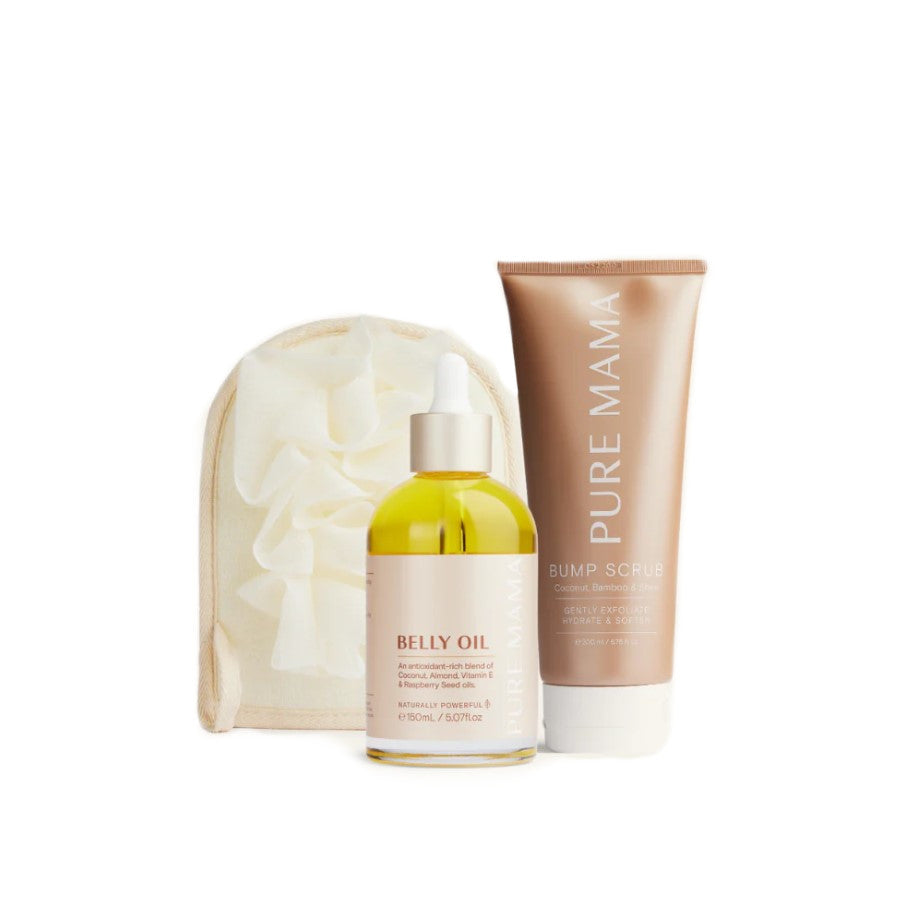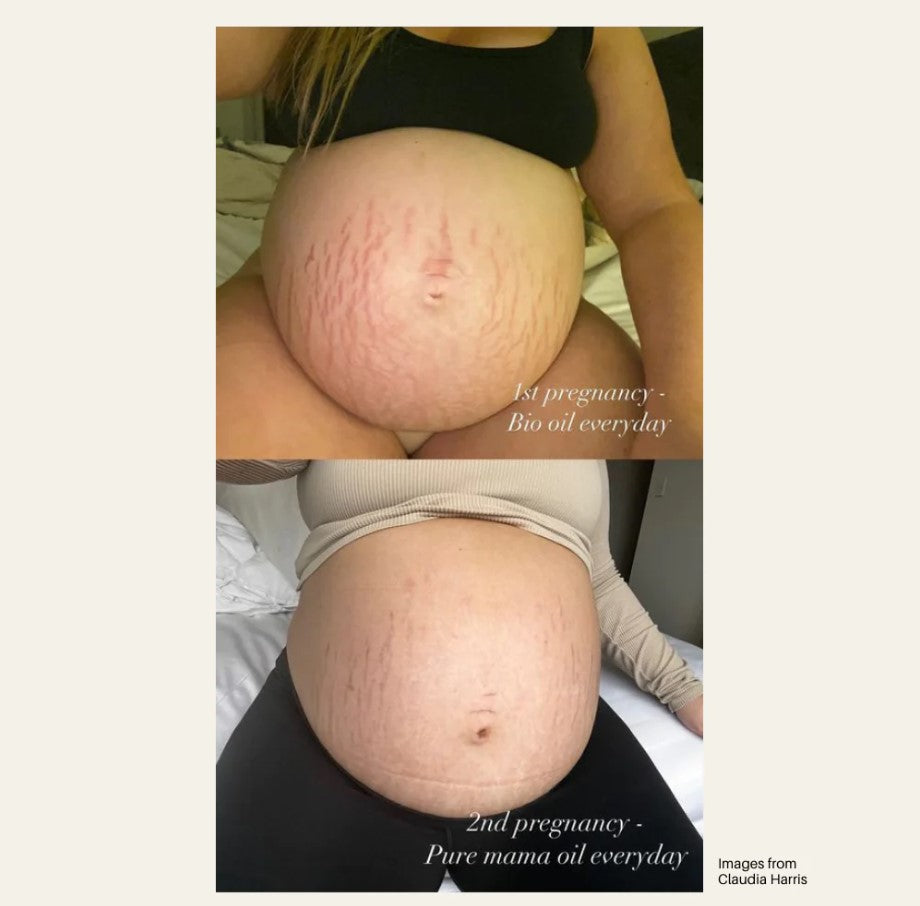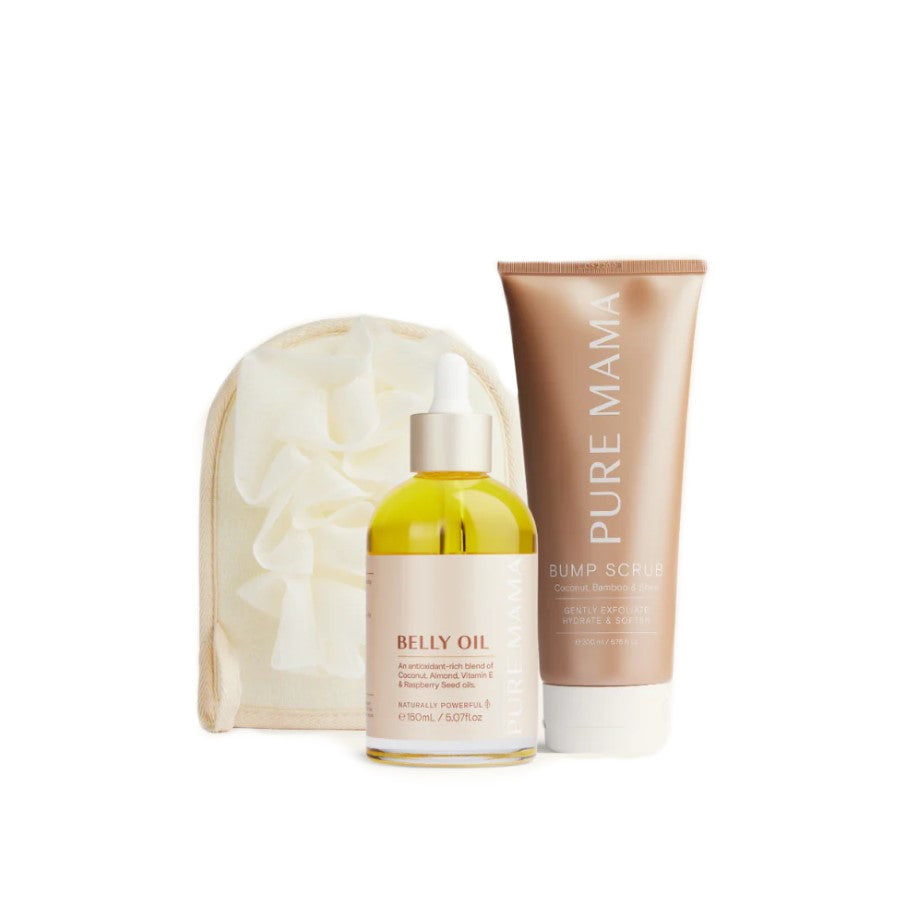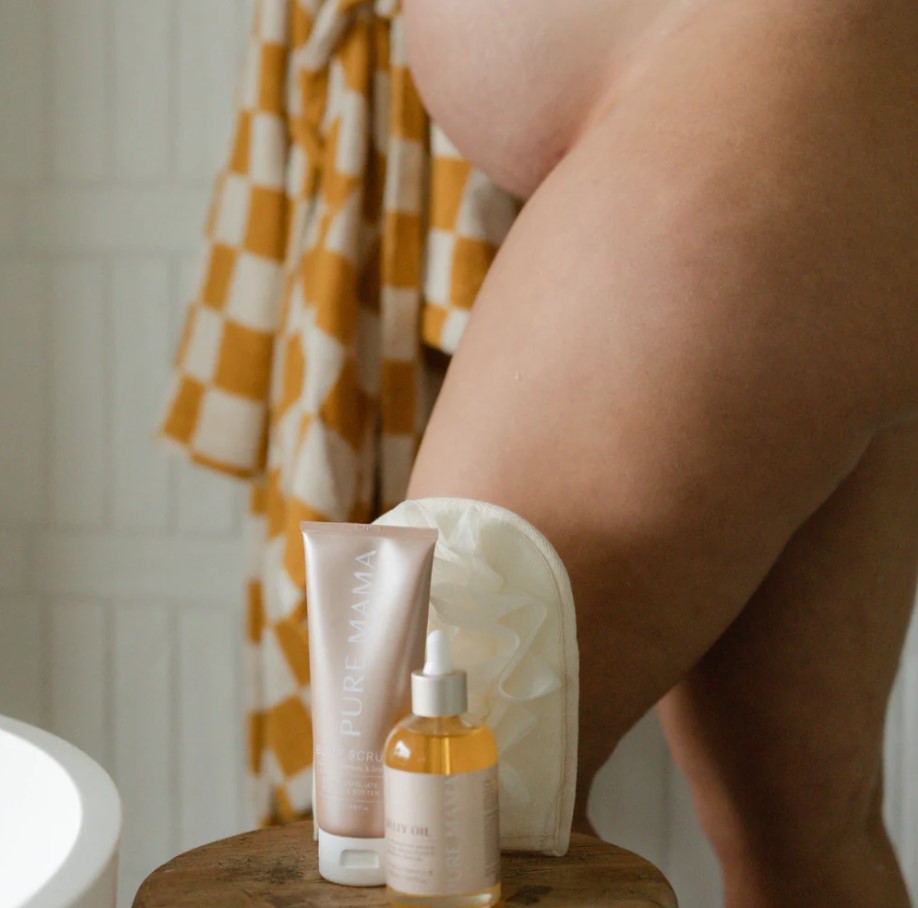Bump Love Set
Bump Love Set
SKU:PMBLS
In stock
Couldn't load pickup availability
Overview
Overview
A luxurious duo combining a gentle exfoliator and antioxidant-rich oil to help support your growing body. These nutrient-rich blends will leave your skin feeling deeply nourished and hydrated. Combining two of our best selling essentials, this is the ultimate in belly care.
*All full size products*
The perfect gift for Mama.
What's Included
What's Included
Delivery and Returns
Delivery and Returns
- Delivery: Free within NZ on orders over $100 (excluding bulky items) or $8 standard shipping
- Returns: Accepted within 14 days of receipt with proof of purchase
- Some items are excluded from returns including sale items, hardware, car seats, prams, monitors and personal items - please click here for the full list.
Share this product
Recently Viewed Products
Related Blogs
Mindful Meal Prep for Expectant Mums
In today’s busy modern society, the importance of sitting down together as a family at meal times and eating together and sharing about your day is a lost tradition for many. It is instead often a time that is busy, chaotic, and full of distractions with parents and children eating dinner at different times. There has been a plethora of research conducted around the benefits of family meal times, these benefits are said to include reduced rates of obesity, that adults tend to eat more slowly and often consume less food because they are engaged with other family members and discussion. This leads to less fast-paced mindless eating, chewing food adequately, and time for satiety ques to signal you are full more effectively. Something as simple as slowing down at meal times and chewing food effectively is an incredibly powerful health habit as this allows for the first phase of digestion to happen more efficiently. Cephalic phase digestion, meaning ‘of the head’ occurs at the sight, smell and taste of food and results in the excretion of approximately 20% of the gastric secretions required for digesting foods. Being mindful to slow meal times makes a huge difference in allowing the body adequate time for `these digestive phases to take place, chewing food is an incredibly important part of this process as it not only begins the mechanical breakdown of food but allows foods to be effectively mixed with saliva that is full of enzymes required to break down and digest foods. As a busy mum of four myself, I admit at times that when dinner rolls around at the end of a long day it feels like a chore, and can feel like a ‘job’ that I just want to be over as fast a possible. I have become aware that when I approach meal times in this way I end up feeling more stressed and don’t take the time to cook meals that are as nutritious as I would like, often resulting in me feeding the kids first which almost always leaves them not eating much of their dinner. My kids also don’t wind down as well when we approach meal times in this way and can easily flow on to a more challenging bedtime. In contrast, when we cook and eat together as a family, I usually feel less stressed, my children feel a sense of pride in having helped, and because I have put more thought into that meal time its generally a nutritionally superior meal. I almost always find the kids will eat more of their dinner and be far less fussy when meal times are approached in this way. I also notice my children are more relaxed at bedtime when we have had a relaxing family dinner together also. The research has also indicated that eating together builds stronger family relationships as it allows you all to come together and discuss your day, and feel connected and heard which helps to build a stronger sense of belonging which is thought to build self-esteem. Children learn through an example so role modeling good eating habits and table manners provides a great learning opportunity. As I always say aim for progress, and not perfection when it comes to health, if family meal times are not something that you currently do often in your house aim to implement a day a week and build on that. Don’t let it be a source of stress or guilt but instead a new fun tradition to start as a family. In my next blog, we will take a look at fun ways to get kids in the kitchen to teach them the valuable life skill of cooking. Kylie Stowe @melawholefoods Veggie loaded meatballs with salad and kumara wedges Serves 4 Meatballs 400 grams of prime minced beef 1 grated carrot 1c of thinly sliced baby spinach 2 cloves of crushed garlic 1 egg 4 tbsp of grated parmesan 2 tbsp of almond flour 1 tin of Ceres Organics Cherry Tomatoes Handful of freshly chopped thyme Kumara wedges 4 small kumara cut into chunky wedges Drizzle of olive oil Seasoning Side salad 4 cups of salad greens 1c of halves cherry tomatoes 4 tbsp of toasted pumpkin seeds 4 diced gherkins ½ a diced cucumber ½ a diced capsicum Drizzle of balsamic vinaigrette Method Preheat the oven to 180c fan bake Combine and mix through all of the ingredients for the meatballs (besides the tinned tomatoes and thyme) shape into golf ball sized meatballs. Mix the tinned tomatoes and herbs then pop in the fridge while you prepare the kumara wedges. Toss the kumara fries in oil and seasoning. Line a shallow baking dish with baking paper then evenly arrange the kumara wedges and put into the oven. Remove the meatballs from the fridge, lightly brown in a cast iron pan and top with the tomato and herb mixture. Put into the oven. Bake both for approximately 20 minutes depending on your oven. While the kumara and meatballs are baking combine the salad ingredients. I like to serve mine with a dollop of coconut yogurt. Enjoy!
Learn morePregnancy stages – First Trimester
Welcome, little bean Here’s what happens during your first trimester of pregnancy. You’re pregnant! Congrats – this is both an unbelievably special moment, and one that’s totally ordinary. It should come as a comfort to you that while this may be your first time pregnant, there are billions of women who have gone before you. The first thing to remember about pregnancies is that each is unique – our founder Jane Anne had 14 children and tells us that none of her pregnancies were the same. There are, however, some things you can predict. Most women experience similar things at similar stages, and you can expect your baby to grow and develop at predictable periods. The first trimester begins at the official date of conception, which oddly enough is counted from about two weeks before you actually conceive. That’s because doctors count from the date of your last period – you’ll have ovulated and conceived about two weeks after, but there’s no way of knowing exactly when. What happens to your body? During the first trimester, your baby’s development is at its most visibly startling, developing from a cluster of cells into something that looks pretty much human in a matter of weeks. That takes a lot of effort – and hormones – on the part of your body. While most women won’t start to show until the second trimester (and a bit earlier if this isn’t your first pregnancy), many women feel very pregnant very quickly – bloat can look a lot like a pregnancy belly. Some other symptoms you may experience are: Feeling really tired Sore and swollen breasts and nipples Morning sickness (that actually appears around the clock!) Food cravings or aversions Mood swings Constipation Needing to pee more Headaches Indigestion Weight gain or loss Such glamour! But don’t worry – this is only a short-lived period in your pregnancy. It gets easier. The best way to manage it is to stay as healthy as possible. Eat and sleep well, and get as much gentle exercise as you can manage. That means you may need to go to bed earlier, cut out foods that make you queasy, eat smaller meals more frequently, and shift away from high-impact exercises to walking, swimming, and yoga. For many women, morning sickness peaks in weeks 8 and 9 and then will begin to taper off – along with their other symptoms – as they head into the second trimester (counted from 12 weeks). What’s going on in there? Your baby is getting busy! These early weeks are when your baby is building all the components of its body. By week 12, your baby will look like a person (just with odd proportions). At four weeks, your baby is still called an embryo. At a teeny tiny 0.5cm long, your baby has already begun work on its brain, spinal cord, and heart. Four little buds have sprouted, which will eventually become legs and arms. By week eight, your baby is 2.5cm and is now officially a fetus. All major organs are under development (hello, tiny lungs) and the heart has begun to beat. Little details are underway too – fingers and toes (with minuscule nails!) sex organs and facial features. The end of the first trimester is marked by the beginning of week 12. At this point, your baby is about 7.5cm long, with nerves and muscles that work together (which is why some parents catch their little one sucking a thumb on scans!) Eyelids close and won’t open again until about week 28. If you could peer inside, you’d see that your baby looks quite a lot like… a baby! The head, however, is still a lot bigger in proportion to the body and the arms and legs are still quite short. What happens next? Read about your second trimester here.
Learn moreBaby Comforters: What Are They, and How To Introduce Them
There’s something very special about watching your baby snuggle into their favourite little blanket or soft toy. For many little ones, a comforter (or blankie) becomes more than just a bedtime accessory - it’s a trusted friend that brings a sense of calm and reassurance through every new stage of growing up.
Learn moreNewborns & Sleep: What to Expect and Survival Tips
Bringing a new baby home is one of life’s most beautiful - and exhausting - adventures. In this blog, Family Sleep & Wellness Coach, Lauren Moran from Little Dreamers, shares her expert advice on newborn sleep in the fourth trimester.
Learn more
















